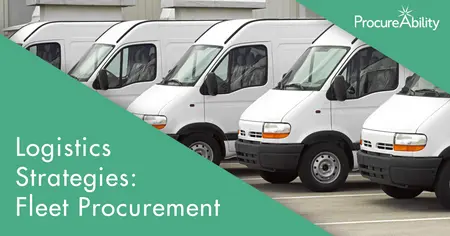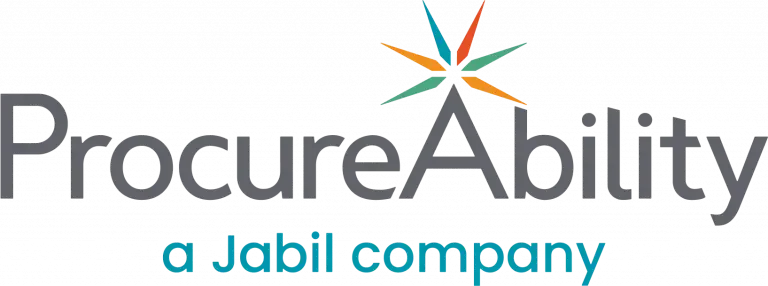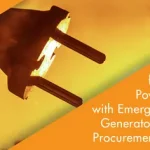
Fleet is an area where there are often significant cost saving opportunities. Fleets support critical business functions and may be the primary means of: delivering to customers, transporting employees and materials, and of ensuring the safety and function of core business operations. Procurement plays an interesting and critical role with fleet management and logistics strategies. The strategies outlined below can help your team manage budget constraints, increase visibility of spend, improve efficiency, and improve performance in maintenance operations. While there are various aspects of Fleet that should be considered when developing the strategy, we will focus here on acquisition and maintenance.
The acquisition aspect of Fleet is at the core of a sound transportation strategy. Organizations may choose to lease, buy or take a hybrid approach when building out their fleet. Strategies vary widely based on industry, size of the organization, and purpose of the fleet. First, conduct an assessment that clearly outlines the purpose of the fleet, financial goals, risks, stakeholders, etc. With a fact-based assessment in hand, you can be confident in establishing your Fleet strategy. The assessment should address:
- Specifications: Specifications of the units should align to the overall purpose of the fleet.
- Determine if there are low cost or fuel-efficient options that will still serve the purpose.
- Be very clear on “must haves” vs “nice to haves.”
- When establishing specs, consider the total cost of ownership (TCO) over the lifetime of a unit, including maintenance and replacement costs.
- Options offered to the field should be minimized for streamlined management.
- Purchasing: If owned equipment fits your overall strategy, periodic strategic sourcing events can maximize your spend leverage (that is, lower costs) and provide an opportunity to improve warranties and service guarantees at the same time.
- It is important to negotiate the entire purchase for the upcoming 1-5 years in the strategic sourcing event. After the sourcing event is complete, ongoing “orders” can be placed against the pre-negotiated agreement with your established providers.
- Include warranties and service guarantees in your negotiations.
- Leasing: If leasing, it is important to determine if units in the fleet are a capital lease or operating lease. A capital lease is treated like an asset on the balance sheet and depreciates over time; whereas an operating lease is an expense, is not included on the balance sheet, and is used for short-term arrangements (similar to renting).
- Strategic sourcing is also appropriate for lease agreements. Events should leverage your total fleet spend.
- Full-service leases should be evaluated based on your internal maintenance capabilities and service profile.
- Replacement schedule: The depreciation schedule determines how the fleet’s per unit value goes down over time. A thorough analysis of maintenance vs replacement costs can help you determine the exact timing to replace older vehicles and minimize overall costs.
- Ongoing awareness of the used vehicle markets is fundamental to this strategy. In 2020, savvy fleet managers who paid close attention to new vs used vehicle markets, were able to upgrade fleets for little cost when the price for used vehicles shot up much more than the increase in price for new vehicles.
Maintenance is another critical aspect of your Fleet strategy. If units in the fleet continually break down and fail, the overall utilization will suffer and inevitably negate any cost savings. There are a few items to consider when evaluating fleet maintenance:
- Parts sourcing: Strategically sourcing parts may seem like a daunting task, but the rewards are significant.
- A thorough parts strategy will take into account the needs of your end users, mechanics and clerks.
- Providing a robust set of data and requirements to suppliers will support productive negotiations. Most suppliers in this space are accustomed to providing their customers with detailed purchase data; if your internal data doesn’t give you the level of detail you require, then ask your incumbent suppliers to help.
- Maintenance providers: Good service provider relationships are based on good communication and providing visibility of your needs.
- Location, capacity, and service levels are just a few of the areas to explore when finding the right fit for your fleet.
- Maintenance plan: As a minimum, determine whether the current maintenance plan meets the manufacturer recommendations.
- Experience and research can help to identify the optimal maintenance plan for your fleet.
- Active management of warranties can generate millions of dollars in annual savings for a sizeable fleet.
- Maintenance costs: Tracking maintenance costs and understanding the trends as vehicles age is an important input to the procurement replacement schedule.
- Driver compliance: To ensure that drivers are complying with the established maintenance policies, you will need a tracking mechanism for your fleet. Telematics, the use of technology to control and monitor vehicles, is a growing method for preventative maintenance that reduces breakdowns and costly repairs.
Fleet acquisition and maintenance sourcing strategies not only play a role in the utilization of the fleet, but the productivity of the operations as a whole. For example, if Hi-Los are required to move raw material around a manufacturing facility, unplanned downtime can lead to a reduction in overall equipment effectiveness (OEE) and ultimately production. Taking the time to develop a sound fleet sourcing strategy will pay dividends directly, create value, help avoid unnecessary costs, and boost the productivity of your fleet and operations.
Do you have a solid fleet strategy in place? If you want to explore these strategies and more, contact your Logistics procurement experts at ProcureAbility.
Subscribe to ProcureAbility Insights to access whitepapers, presentations, plus our latest thought leadership.



